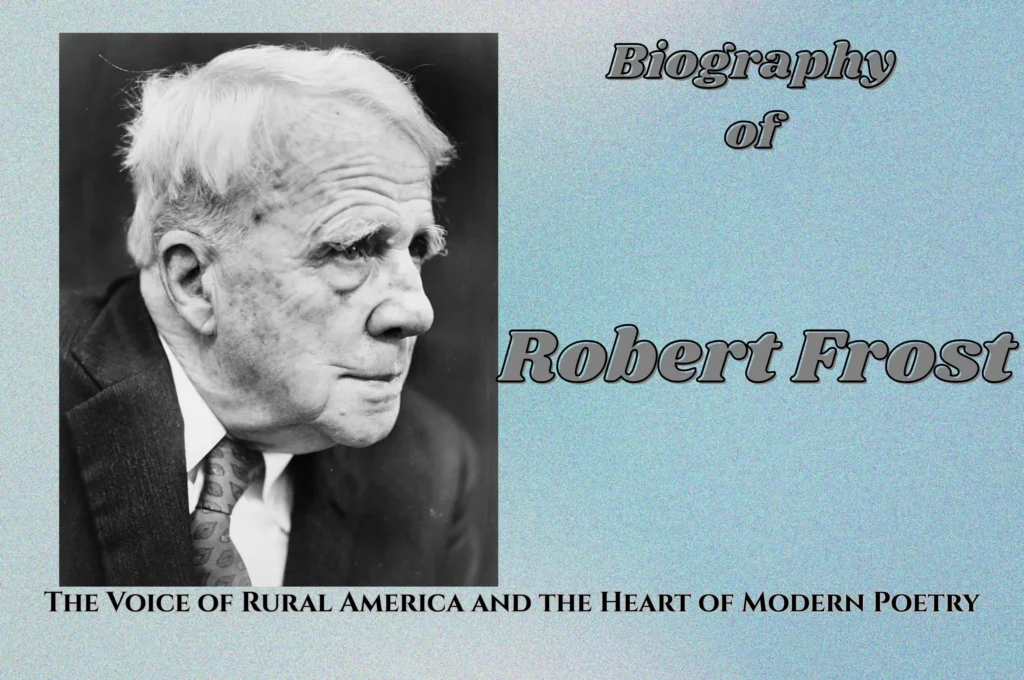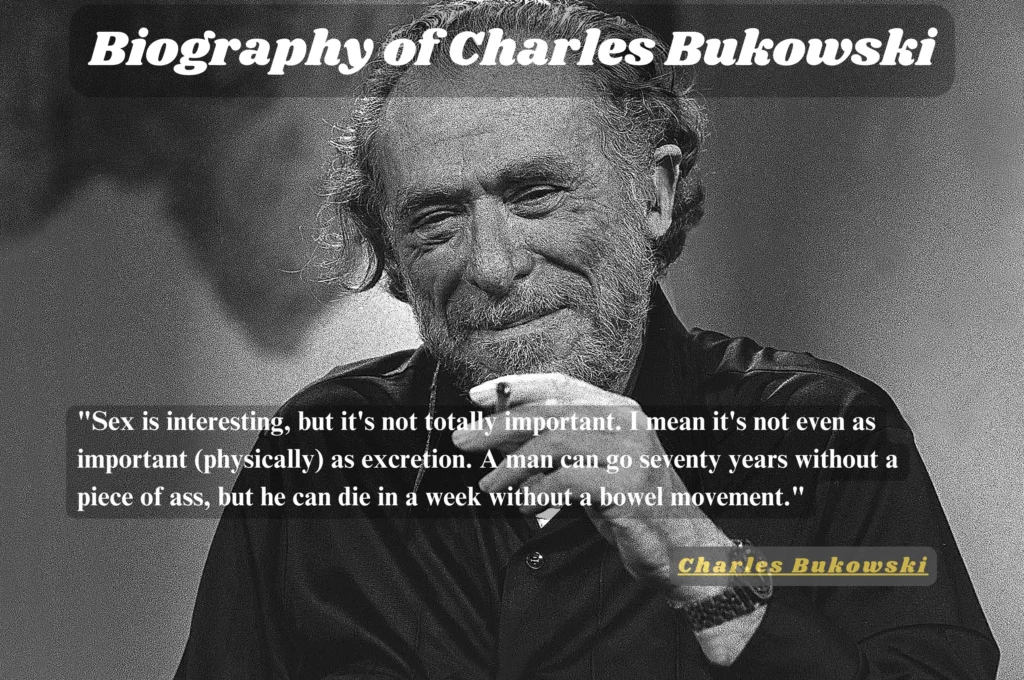The American Revolution was far more than a simple war for independence—it marked a seismic shift in political philosophy, military tactics, and collective identity. What began as colonial discontent over taxation and representation exploded into a full-scale rebellion that would challenge the mightiest empire of its time. Over eight grueling years, this revolution transformed thirteen disparate colonies into a unified nation, birthing radical ideas about liberty, democracy, and human rights that would echo across continents.
At its core, the Revolution was a battle of competing visions: Britain sought to maintain its imperial dominance, while American patriots fought for self-governance and fundamental freedoms. The conflict’s early stages saw peaceful petitions give way to violent confrontation, with events like the Boston Massacre and Tea Party galvanizing colonial resistance. When the first shots rang out at Lexington and Concord in 1775, they ignited a war that would test the resilience of soldiers, the diplomacy of leaders, and the endurance of an emerging nation.
The Revolution’s battlefields—from Bunker Hill to Yorktown—became crucibles where military strategy, foreign alliances, and sheer perseverance decided the fate of a continent. Figures like Washington, Jefferson, and Franklin emerged as architects of a new order, while ordinary farmers and tradesmen became unlikely heroes. Meanwhile, the Revolution’s ideals were enshrined in foundational documents like the Declaration of Independence, which boldly asserted that governments derive their power from the consent of the governed.
Also Read: Explore the epic journey of America | Discovery, Colonization, and the Birth
Yet the Revolution’s legacy is complex, marked by contradictions between its lofty principles and the realities of slavery, Native American displacement, and ongoing struggles for equality. Its aftermath saw the fragile Articles of Confederation give way to the U.S. Constitution, laying the groundwork for the world’s oldest surviving federal republic. Today, the American Revolution endures not just as a historical event, but as an ongoing experiment in democracy—one whose lessons continue to shape nations and inspire movements for freedom worldwide.

The American Revolution (1775–1783) and Birth of America
1. The Outbreak of War: The Battles of Lexington and Concord (April 19, 1775)
The Outbreak of War: The Battles of Lexington and Concord (April 19, 1775)
The Battles of Lexington and Concord marked the beginning of the American Revolution, transforming years of political tension into armed conflict. These battles were the first major engagements between the British Army and American colonial militias, proving that the colonies were willing to fight for their freedom.
The events of April 19, 1775, were not random skirmishes but a well-coordinated response by American patriots determined to resist British rule. The conflict began with British plans to disarm the colonists and ended with a desperate British retreat under constant fire from Minutemen.
Background: Tensions Boil Over
Growing British Control and Colonial Resistance
By 1775, tensions between Britain and its American colonies had reached a breaking point. After years of taxation without representation, restrictive laws such as the Intolerable Acts, and British military occupation of Boston, the colonists were on the verge of open rebellion.
British authorities, particularly General Thomas Gage, the military governor of Massachusetts, feared that colonial resistance would escalate. Reports indicated that the Massachusetts militia was stockpiling weapons and gunpowder in Concord, a town 20 miles northwest of Boston.
British Orders to Seize Weapons
- On April 18, 1775, General Gage received orders from London to seize and destroy military supplies stored by the rebels.
- Gage planned a covert night operation to march British troops to Concord, where they would confiscate weapons and arrest key revolutionary leaders, including Samuel Adams and John Hancock.
- The mission was supposed to be a surprise to prevent a colonial response.
However, American patriots were well-prepared, thanks to a secret network of spies and informants.
Paul Revere’s Midnight Ride: The Alarm is Raised
Read the Poem: The Midnight Ride of Paul Revere Reimagined
The colonists had organized an intelligence network to monitor British troop movements. On the night of April 18, 1775, when British soldiers began marching toward Concord, American patriots sprang into action.
The Famous Midnight Ride
- Paul Revere, William Dawes, and Samuel Prescott rode through the Massachusetts countryside, warning towns and villages:
“The British are coming! The British are coming!”
- Revere reached Lexington, where he warned Adams and Hancock, allowing them to escape arrest.
- Along the way, Prescott managed to reach Concord to alert the local militia.
The alarm spread quickly, and within hours, hundreds of Minutemen (colonial militia) armed themselves and prepared for battle.
The Battle of Lexington (April 19, 1775, at Dawn)
The First Shots of the Revolution
- Just before sunrise, on April 19, 1775, about 700 British troops under Major John Pitcairn arrived in Lexington and found 77 Minutemen waiting on the village green.
- Captain John Parker, leader of the Minutemen, famously told his men:
“Stand your ground. Don’t fire unless fired upon. But if they mean to have a war, let it begin here!”
- A tense standoff followed, with neither side wanting to fire the first shot.
“The Shot Heard ‘Round the World”
- Suddenly, a shot rang out—no one knows who fired it.
- British troops opened fire, killing eight Minutemen and wounding nine others.
- The remaining Minutemen dispersed, allowing the British to continue their march toward Concord.
The battle lasted only a few minutes, but it was the first time blood had been spilled in the war for independence.
Also Read: Explore the epic journey of America | Discovery, Colonization, and the Birth
The Battle of Concord (April 19, 1775, Morning)
After leaving Lexington, the British marched on to Concord, expecting to seize hidden colonial weapons.
North Bridge: A Turning Point
- Upon arrival, the British searched for arms but found little—the colonists had already moved their supplies.
- Meanwhile, 400 Minutemen gathered at North Bridge, a strategic point leading into Concord.
- When British troops fired on the Americans, the Minutemen fired back, forcing the British to retreat for the first time.
This was a pivotal moment—it proved that colonial militias could stand up to British forces.
The British Retreat: A Deadly Ambush
After the confrontation at Concord, the British realized they were outnumbered. Around noon, they began their retreat back to Boston, but it turned into a disastrous rout.
Colonial Militias Strike Back
- As the British marched back, thousands of colonial Minutemen ambushed them from behind trees, stone walls, and houses.
- The colonists used guerrilla tactics, hitting British troops from multiple angles.
- At Menotomy (now Arlington) and Cambridge, intense fighting erupted, leaving British soldiers dead in the streets.
British Casualties and Final Escape
- By the time the British reached safety in Charlestown, they had suffered nearly 250 casualties— three times the number of American losses.
- This unexpected colonial resistance stunned the British and signaled that the war would be long and difficult.
The Aftermath: The Start of Revolution
The battles at Lexington and Concord had far-reaching consequences:
For the American Colonies:
- The battles proved that the colonists would fight for their rights.
- Thousands of volunteers from across the colonies joined local militias, preparing for war.
- By April 20, 1775, colonial militias had surrounded Boston, leading to the Siege of Boston.
For the British:
- General Gage realized that controlling the colonies would require a full-scale war.
- British forces retreated to Boston, where they remained trapped by American militias.
- Britain underestimated the determination of the colonists, leading to further mistakes in the war.
For the World:
- The battle inspired resistance movements worldwide, proving that ordinary citizens could challenge a powerful empire.
- The phrase “the shot heard ’round the world” became a symbol of revolution and freedom.
The War for Independence Had Begun
The Battles of Lexington and Concord were more than just small skirmishes—they were the spark that ignited the American Revolution.
✅ First time colonial militias directly engaged British troops.
✅ First casualties of the Revolutionary War.
✅ First major victory for colonial forces (at North Bridge and during the retreat).
✅ Proved that the colonies would not submit to British rule without a fight.
From this point forward, compromise was no longer an option. The colonies and Britain were at war, and there was no turning back.
Also Read: Explore the epic journey of America | Discovery, Colonization, and the Birth
2. The Formation of the Continental Army
After the battles of Lexington and Concord, the conflict between Britain and the American colonies escalated rapidly. What had begun as regional skirmishes in Massachusetts had now evolved into an armed resistance spanning multiple colonies. With British troops occupying Boston, colonial leaders faced a crucial decision—continue resisting as separate militias or unite under a structured military force.
In May 1775, the colonies took a significant step toward revolution by convening the Second Continental Congress, where they debated how to organize their defenses and respond to British aggression. The result was the formation of the Continental Army, the first official military force of the United States, led by General George Washington.
The Second Continental Congress (May 1775): A Call for Unity
Why Was the Congress Convened?
The Second Continental Congress met in Philadelphia on May 10, 1775, just a few weeks after the battles at Lexington and Concord. Unlike the First Continental Congress (1774), which had focused on negotiating with Britain, this new assembly faced a different reality:
- British troops were actively fighting against American militias.
- The colonies were divided on whether to seek reconciliation or declare independence.
- The need for a unified military response was urgent.
Key Debates and Actions
- Peace or War?
- Some moderates, like John Dickinson, still hoped for a peaceful resolution and proposed the Olive Branch Petition to King George III.
- Radicals, including John Adams, Samuel Adams, and Patrick Henry, argued that war was inevitable and that the colonies should prepare to fight.
- The Decision to Form an Army
- The Congress recognized that militias alone could not stand against the British Army.
- They voted to create the Continental Army, a structured national force instead of relying on disorganized colonial militias.
- George Washington Appointed as Commander-in-Chief
- On June 15, 1775, the Congress unanimously selected George Washington to lead the Continental Army.
- Washington’s selection was strategic:
- He was a veteran of the French and Indian War.
- As a Virginian, he helped unite the Southern and Northern colonies.
- His leadership and commitment to the cause made him the ideal candidate.
With Washington’s appointment, the colonies had taken a monumental step toward independence—they now had a national army prepared for war.
Early Conflicts and the Siege of Boston (1775–1776)
Following the formation of the Continental Army, its first major test was against British forces occupying Boston. The city had been under British control since the Intolerable Acts, and General Thomas Gage had fortified it with thousands of Redcoats. However, colonial militias were determined to drive the British out.
The Battle of Bunker Hill (June 17, 1775): A Costly British Victory
Background
- After the skirmishes at Lexington and Concord, colonial militias surrounded Boston, trapping the British inside.
- The British planned to break the siege by seizing high ground, particularly Bunker Hill and Breed’s Hill, which overlooked the city.
The Battle
- On the night of June 16, 1775, American militias secretly fortified Breed’s Hill, mistakenly believing it was Bunker Hill.
- The next day, General William Howe led 2,200 British troops in three waves of frontal assaults against the entrenched Americans.
- The American commander, Colonel William Prescott, famously told his men:
“Don’t fire until you see the whites of their eyes!”
- First two British assaults were repelled with heavy British casualties.
- On the third assault, Americans ran out of ammunition and were forced to retreat.
Outcome
✅ British victory—they took the hill, but at a huge cost (1,054 casualties, including many officers).
✅ American morale boost—the battle proved that colonial forces could stand up to British troops.
✅ Increased support for the revolution—news of the battle spread across the colonies, leading to more recruitment into the Continental Army.
Though the British had taken the battlefield, the heavy losses convinced them that defeating the Americans would not be easy.
The Siege of Boston (March 1776): Washington’s First Victory
After taking command of the Continental Army in July 1775, Washington faced a major challenge—the British controlled Boston, and the Americans lacked the weapons to force them out.
The Turning Point: Cannons from Fort Ticonderoga
- In May 1775, Ethan Allen and Benedict Arnold had captured Fort Ticonderoga, a British fort in upstate New York.
- The fort contained dozens of heavy cannons, which the Americans desperately needed.
- In a daring winter mission, Colonel Henry Knox transported 60 tons of artillery over 300 miles to Boston.
Washington’s Strategy
- On March 2, 1776, Washington ordered the placement of cannons on Dorchester Heights, an elevated position overlooking Boston Harbor.
- The British, realizing their fleet was now vulnerable, chose to evacuate rather than risk destruction.
British Evacuation (March 17, 1776)
- General William Howe, replacing Gage, ordered all British troops to withdraw.
- More than 11,000 British soldiers and 1,000 Loyalists fled to Nova Scotia, Canada.
- Boston was now under American control—a major victory for Washington and the Continental Army.
This victory cemented Washington’s leadership and gave the colonists confidence that they could defeat the British.
The Push for Independence Gains Momentum
As the war intensified, so did the push for complete independence. Before 1776, many colonists still hoped for reconciliation with Britain. However, the events of the war changed public opinion.
Why Did More Colonists Begin Supporting Independence?
- British Military Actions:
- The battles at Lexington, Concord, and Bunker Hill showed that Britain was willing to use force to suppress the colonies.
- The Influence of “Common Sense” (January 1776):
- Thomas Paine, an English immigrant, published Common Sense, a pamphlet arguing that:
- Monarchy was oppressive and unnatural.
- America had the right to govern itself.
- Independence was the only logical solution.
- The pamphlet sold 500,000 copies, influencing public opinion in favor of independence.
- Thomas Paine, an English immigrant, published Common Sense, a pamphlet arguing that:
- Formation of the Continental Army:
- The creation of a national military force signaled a shift from rebellion to revolution.
- Colonists began identifying as Americans, rather than British subjects.
By the summer of 1776, the movement for independence had gained overwhelming support, leading to the drafting of the Declaration of Independence.
Conclusion: A Nation Prepares for War
The formation of the Continental Army and early battles in Boston were critical in shaping the Revolutionary War.
✅ The Second Continental Congress created the Continental Army, the first organized military force of the United States.
✅ George Washington became Commander-in-Chief, leading the colonies toward full revolution.
✅ The Battle of Bunker Hill proved that American forces could fight against the British Army.
✅ The Siege of Boston ended in a major American victory, boosting morale.
✅ The war pushed more colonists toward full independence, setting the stage for the Declaration of Independence in July 1776.
Though the war was far from over, these early victories laid the foundation for the eventual birth of the United States.
3. Birth of America
The Revolutionary War had been won, and with the signing of the Treaty of Paris in 1783, the United States was officially recognized as an independent nation. However, winning independence was only the first step—the real challenge lay ahead: building a functioning government and ensuring the new republic’s survival.
The post-war years were tumultuous as the Articles of Confederation—America’s first governing document—proved to be weak and ineffective. Internal conflicts, economic struggles, and political instability forced the nation’s leaders to rethink the structure of their government, culminating in the drafting of the U.S. Constitution in 1787.
The Constitution established a stronger federal system, balancing power between state and national authorities, and created a three-branch government that is still in place today. George Washington, the war hero and unanimously elected first President, played a crucial role in shaping the early United States, setting precedents that would guide the nation for generations.
1. The Articles of Confederation: A Weak Foundation
During the Revolutionary War, the Continental Congress needed a framework for national governance. In 1777, they drafted and adopted the Articles of Confederation, which went into effect in 1781. While the Articles served as the country’s first constitution, they had severe weaknesses that quickly became apparent.
Key Features of the Articles of Confederation
✅ Established a confederation where states retained sovereignty.
✅ Created a unicameral legislature (Congress) with equal representation for all states.
✅ Allowed Congress to conduct foreign policy, declare war, and coin money.
Major Weaknesses
❌ No strong central government – States operated almost independently.
❌ No power to tax – Congress had to request funds from states, often without success.
❌ No national army – States maintained their own militias.
❌ No executive or judicial branch – No President or Supreme Court to enforce laws.
❌ Unanimous consent required for amendments – Making changes was nearly impossible.
As a result, the nation struggled economically, with rampant inflation, debt, and interstate disputes. The country seemed to be falling apart just a few years after gaining independence.
2. Shays’ Rebellion (1786): A Wake-Up Call
The most alarming sign of the Articles’ failure came in 1786, when Daniel Shays, a former Revolutionary War captain, led an armed uprising in Massachusetts.
Causes of the Rebellion:
- Many farmers were in debt due to high taxes and economic instability.
- State governments began seizing farms from those who couldn’t pay.
- Shays and his followers, mostly war veterans, believed they were fighting against the same kind of oppressive government they had defeated in the Revolution.
Events of the Rebellion:
- Shays and his men attempted to seize a federal armory in Springfield, Massachusetts.
- The Massachusetts militia crushed the rebellion in early 1787.
- The incident exposed the government’s inability to handle internal conflict and led to widespread fear of anarchy.
Impact on the Nation:
📌 Demonstrated the need for a stronger national government.
📌 Prompted leaders to call for the Constitutional Convention to reform the Articles.
Shays’ Rebellion became a turning point, convincing many Americans that the Articles of Confederation were inadequate and that a new system was needed.
3. The Constitutional Convention (1787): Crafting a Stronger Government
In May 1787, 55 delegates from 12 states (Rhode Island refused to participate) gathered in Philadelphia to address the failures of the Articles of Confederation. What began as an effort to revise the Articles quickly turned into the creation of an entirely new government—the U.S. Constitution.
Key Issues Debated
1. Representation in Congress:
- The Virginia Plan (favored by large states) proposed representation based on population.
- The New Jersey Plan (favored by small states) proposed equal representation for all states.
- The Great Compromise: Created a bicameral (two-house) legislature—the House of Representatives (population-based) and the Senate (equal representation, 2 per state).
2. Slavery and the Three-Fifths Compromise:
- Southern states wanted enslaved people counted in population for representation but not taxation.
- Northern states opposed this.
- The Three-Fifths Compromise counted each enslaved person as three-fifths of a person for taxation and representation.
3. Structure of the Federal Government:
The Constitution established a federal system with three branches, ensuring a balance of power:
The Three Branches of Government
1. Executive Branch:
- Led by the President, who enforces laws.
- First occupied by George Washington in 1789.
- Given veto power, authority over the military, and responsibility for foreign affairs.
2. Legislative Branch:
- Congress, consisting of:
- House of Representatives (representation based on state population).
- Senate (equal representation—two senators per state).
- Responsible for creating laws and controlling taxation.
3. Judicial Branch:
- Led by the Supreme Court, ensuring legal oversight.
- Interprets laws and settles disputes between states.
Ratification of the Constitution
- The Constitution was completed in September 1787.
- Required ratification by 9 out of 13 states to become law.
- The Federalists (supporters, like Hamilton and Madison) and Anti-Federalists (opposers, like Patrick Henry) debated fiercely.
- The Bill of Rights (first 10 amendments) was added to gain support from Anti-Federalists.
- By June 1788, the Constitution was ratified, and a new government was born.
4. Washington’s Presidency (1789–1797): Building a New Nation
The first test of the new U.S. government came with the election of George Washington as the first President in 1789. His leadership was crucial in stabilizing the young nation.
Washington’s Key Policies and Challenges
✅ Establishing a National Economy
- Appointed Alexander Hamilton as Secretary of the Treasury.
- Hamilton introduced financial reforms, including a national bank and debt repayment plans.
✅ Setting Up the Military
- Organized a standing U.S. Army and Navy.
- Suppressed the Whiskey Rebellion (1791)—a tax protest, proving the federal government’s strength.
✅ Maintaining Neutrality in Foreign Affairs
- Avoided involvement in European conflicts (especially between Britain and France).
- Issued the Neutrality Proclamation (1793), keeping the U.S. out of foreign wars.
✅ Peaceful Transfer of Power
- After two terms, Washington stepped down in 1797, setting the precedent of a peaceful transition of leadership.
His farewell address warned against political parties and foreign entanglements, advice that would shape U.S. policy for years to come.
Conclusion: A Nation on the Rise
The birth of the United States was marked by both triumph and struggle. Winning independence was only the beginning—the real test was creating a functional and lasting government.
✅ The Articles of Confederation failed, leading to Shays’ Rebellion.
✅ The U.S. Constitution (1787) created a strong federal system.
✅ Washington’s leadership stabilized the nation, setting many important precedents.
The United States was now firmly established, but challenges lay ahead. As the nation expanded and developed, it would face new crises, conflicts, and the ultimate test of its commitment to democracy.
Chapter 7: The War of 1812 and Beyond
The War of 1812 was a critical moment in early U.S. history, often called “America’s Second War of Independence.” Although the United States had won its freedom from Britain in 1783, tensions between the two nations never fully disappeared. Trade restrictions, naval conflicts, and British support for Native American resistance all contributed to growing hostilities, eventually leading to war.
Though often overshadowed by the Revolutionary War, the War of 1812 played a crucial role in solidifying American sovereignty, inspiring nationalism, and shaping the country’s future.
1. Causes of the War of 1812
Despite the Treaty of Paris (1783), which officially ended the Revolutionary War, Britain continued to interfere in American affairs. Over the following decades, several key issues strained U.S.-British relations:
1.1 British Interference with U.S. Trade
- Britain was at war with Napoleonic France, leading to severe trade restrictions.
- The British navy blocked U.S. ships from trading with France, harming American merchants.
- The U.S. viewed this as a violation of its neutrality and a direct attack on its economic independence.
1.2 Impressment of American Sailors
- The British kidnapped American sailors and forced them into service in the Royal Navy.
- This practice, known as impressment, outraged Americans.
- One of the most infamous incidents was the Chesapeake-Leopard Affair (1807), where a British warship attacked a U.S. naval vessel and seized American sailors.
1.3 British Support for Native American Resistance
- Britain supplied weapons and support to Native American tribes resisting U.S. expansion into the Northwest Territory.
- Shawnee leader Tecumseh formed a Native American confederacy to resist U.S. expansion, with British backing.
- The Battle of Tippecanoe (1811) saw U.S. forces, led by William Henry Harrison, defeat Native forces, increasing tensions with Britain.
1.4 Calls for War
- Many Americans, especially Western and Southern “War Hawks”, wanted war against Britain.
- Leaders like Henry Clay and John C. Calhoun pushed for military action to defend U.S. sovereignty and possibly expand into British-controlled Canada.
- President James Madison, facing growing pressure, declared war on Britain on June 18, 1812.
2. Key Events of the War of 1812
The War of 1812 was fought on multiple fronts—in the Great Lakes, along the East Coast, and in the South. Despite early setbacks, the United States achieved significant victories that boosted morale and reshaped the nation’s identity.
2.1 Early Struggles and British Invasions
Invasion of Canada (1812-1813)
- American forces attempted to invade British Canada but faced defeats due to poor planning and resistance from British and Native American forces.
- The Battle of Queenston Heights (1812) saw U.S. troops repelled by British forces and Native warriors led by Tecumseh.
Naval Battles on the Great Lakes
- The U.S. Navy, though smaller than Britain’s, achieved key victories on the Great Lakes.
- Commodore Oliver Hazard Perry won the Battle of Lake Erie (1813), securing American control of the region.
2.2 The Burning of Washington, D.C. (August 1814)
In August 1814, British forces invaded the U.S. capital as retaliation for the earlier American attack on York (modern-day Toronto, Canada).
- British troops set fire to the White House, the Capitol, and other government buildings.
- First Lady Dolley Madison famously saved a portrait of George Washington before fleeing the White House.
- The attack humiliated the U.S. but strengthened American resolve to fight back.
2.3 The Battle of Fort McHenry (September 1814) – Birth of the National Anthem
After burning Washington, the British moved to attack Baltimore, Maryland. Their main target was Fort McHenry, which protected the city’s harbor.
- British warships bombarded the fort for 25 hours, but U.S. forces held firm.
- As dawn broke, the American flag still flew over the fort, signaling a major U.S. victory.
- Francis Scott Key, witnessing the battle, was inspired to write “The Star-Spangled Banner,” which later became the U.S. national anthem.
2.4 The Battle of New Orleans (January 1815) – A Defining Victory
Even though the war was technically over, word had not yet reached all forces. The most famous battle of the war was fought in New Orleans, where General Andrew Jackson led a diverse army of U.S. soldiers, frontiersmen, and even pirates against a much larger British force.
- Jackson’s defensive tactics and use of high ground and artillery resulted in a crushing U.S. victory.
- The British suffered over 2,000 casualties, while the Americans lost only about 70 men.
- Jackson became a national hero, later leading to his election as President in 1828.
3. The Treaty of Ghent (December 24, 1814) – Ending the War
While battles raged in North America, peace negotiations took place in Ghent, Belgium. The war ended with the signing of the Treaty of Ghent on December 24, 1814.
Key Terms of the Treaty:
✅ Both sides agreed to restore pre-war boundaries (no land was gained or lost).
✅ British agreed to stop supporting Native American resistance.
✅ Trade restrictions were lifted, allowing U.S. economic recovery.
Although the treaty did not address impressment or U.S. maritime rights, the British ceased these practices after the Napoleonic Wars ended.
4. Impact of the War of 1812
Though neither side achieved a decisive victory, the War of 1812 had long-lasting effects on the United States.
4.1 Strengthened U.S. Sovereignty
- The war proved that the U.S. could defend itself against Britain, strengthening national confidence.
- Britain never again attempted military intervention in the U.S..
4.2 Rise of American Nationalism
- Victory at New Orleans and the survival of Fort McHenry sparked patriotic pride.
- “The Star-Spangled Banner” became a symbol of resilience and unity.
4.3 Decline of Native American Resistance
- With Britain withdrawing support, Native American resistance weakened significantly.
- U.S. expansion into Native lands increased dramatically.
4.4 Economic Growth and the “Era of Good Feelings”
- The war forced the U.S. to become economically self-sufficient, leading to industrial growth.
- Politically, the nation entered a period of unity, known as the Era of Good Feelings (1815–1825), under President James Monroe.
5. Conclusion: A Nation on the Rise
The War of 1812 was not just a military conflict—it was a turning point for the young United States.
✅ The war reaffirmed U.S. sovereignty and ended British interference in American affairs.
✅ Andrew Jackson emerged as a national hero, shaping future U.S. politics.
✅ The war boosted national identity and pride, strengthening the United States’ position in global affairs.
Though the war was over, new challenges awaited the nation—expansion, industrialization, and internal conflicts that would shape the coming decades.
List of Poets in Alphabetical Order
कवियों की सूची

YouTube Hindi Channel Link:

YouTube English Channel Link:

YouTube Channel Link:

YouTube Channel Link

















